Preface
Acknowledgments
About the Author
Chapter 1: Accustoming Yourself to Objective-C
Item 1: Familiarize Yourself with Objective-C’s Roots
Item 2: Minimize Importing Headers in Headers
Item 3: Prefer Literal Syntax over the Equivalent Methods
Item 4: Prefer Typed Constants to Preprocessor #define
Item 5: Use Enumerations for States, Options, and Status Codes
Chapter 2: Objects, Messaging, and the Runtime
Item 6: Understand Properties
Item 7: Access Instance Variables Primarily Directly When Accessing Them Internally
Item 8: Understand Object Equality
Item 9: Use the Class Cluster Pattern to Hide Implementation Detail
Item 10: Use Associated Objects to Attach Custom Data to Existing Classes
Item 11: Understand the Role of objc_msgSend
Item 12: Understand Message Forwarding
Item 13: Consider Method Swizzling to Debug Opaque Methods
Item 14: Understand What a Class Object Is
Chapter 3: Interface and API Design
Item 15: Use Prefix Names to Avoid Namespace Clashes
Item 16: Have a Designated Initializer
Item 17: Implement the description Method
Item 18: Prefer Immutable Objects
Item 19: Use Clear and Consistent Naming
Item 20: Prefix Private Method Names
Item 21: Understand the Objective-C Error Model
Item 22: Understand the NSCopying Protocol
Chapter 4: Protocols and Categories
Item 23: Use Delegate and Data Source Protocols for Interobject Communication
Item 24: Use Categories to Break Class Implementations into Manageable Segments
Item 25: Always Prefix Category Names on Third-Party Classes
Item 26: Avoid Properties in Categories
Item 27: Use the Class-Continuation Category to Hide Implementation Detail
Item 28: Use a Protocol to Provide Anonymous Objects
Chapter 5: Memory Management
Item 29: Understand Reference Counting
Item 30: Use ARC to Make Reference Counting Easier
Item 31: Release References and Clean Up Observation State Only in dealloc
Item 32: Beware of Memory Management with Exception-Safe Code
Item 33: Use Weak References to Avoid Retain Cycles
Item 34: Use Autorelease Pool Blocks to Reduce High-Memory Waterline
Item 35: Use Zombies to Help Debug Memory-Management Problems
Item 36: Avoid Using retainCount
Chapter 6: Blocks and Grand Central Dispatch
Item 37: Understand Blocks
Item 38: Create typedefs for Common Block Types
Item 39: Use Handler Blocks to Reduce Code Separation
Item 40: Avoid Retain Cycles Introduced by Blocks Referencing the Object Owning Them
Item 41: Prefer Dispatch Queues to Locks for Synchronization
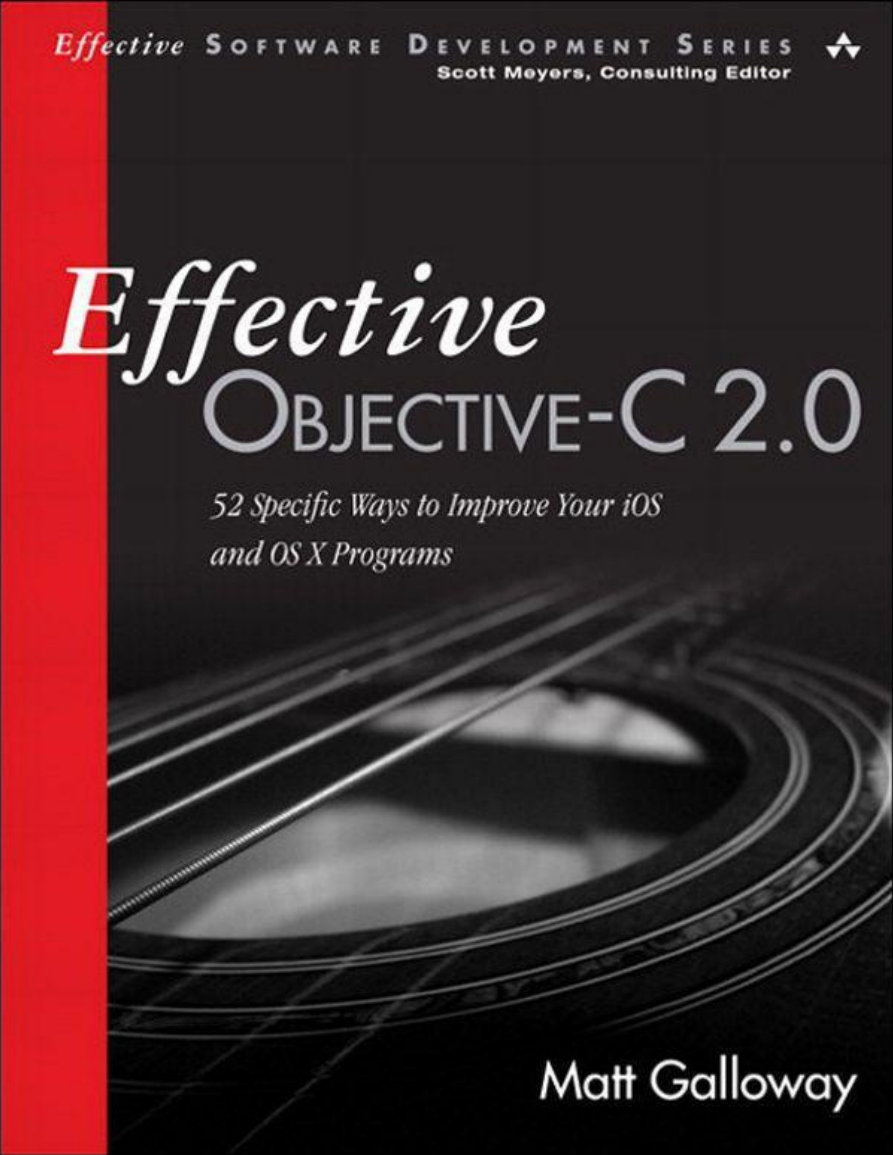
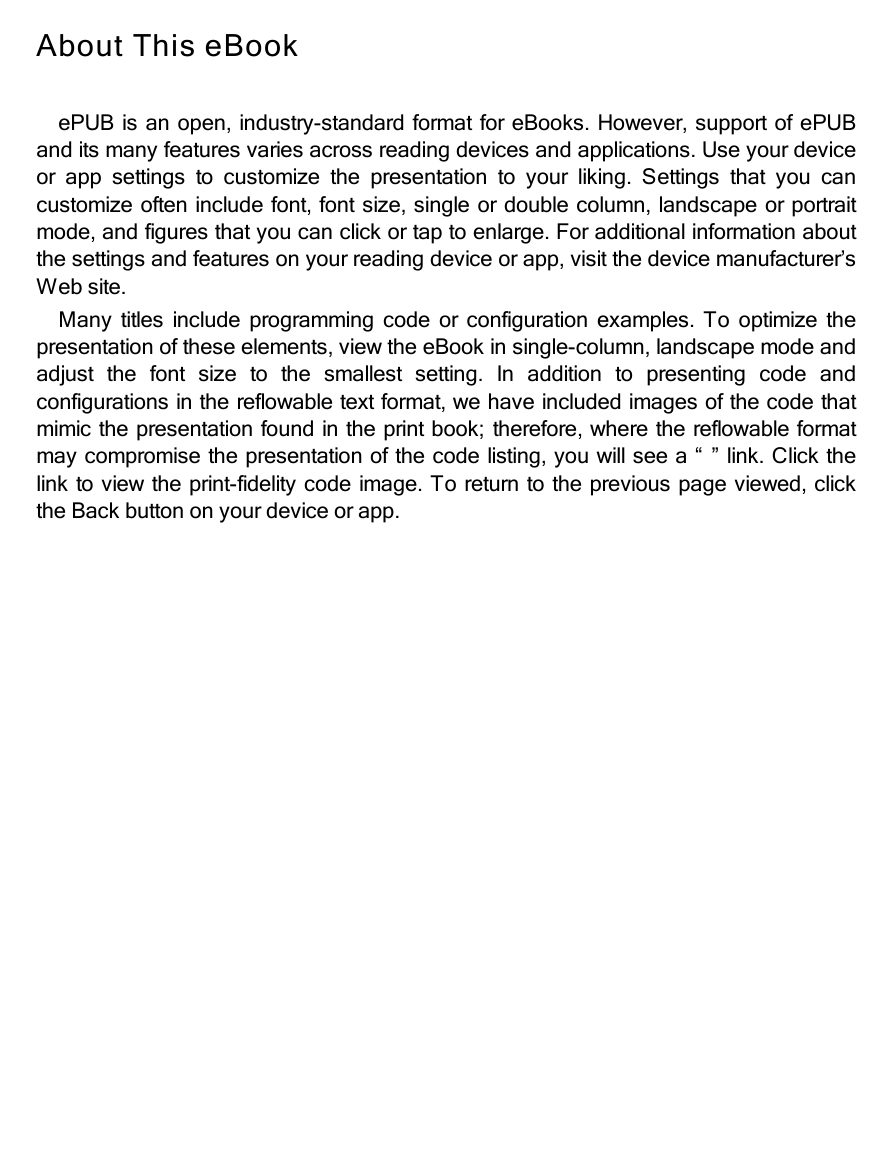
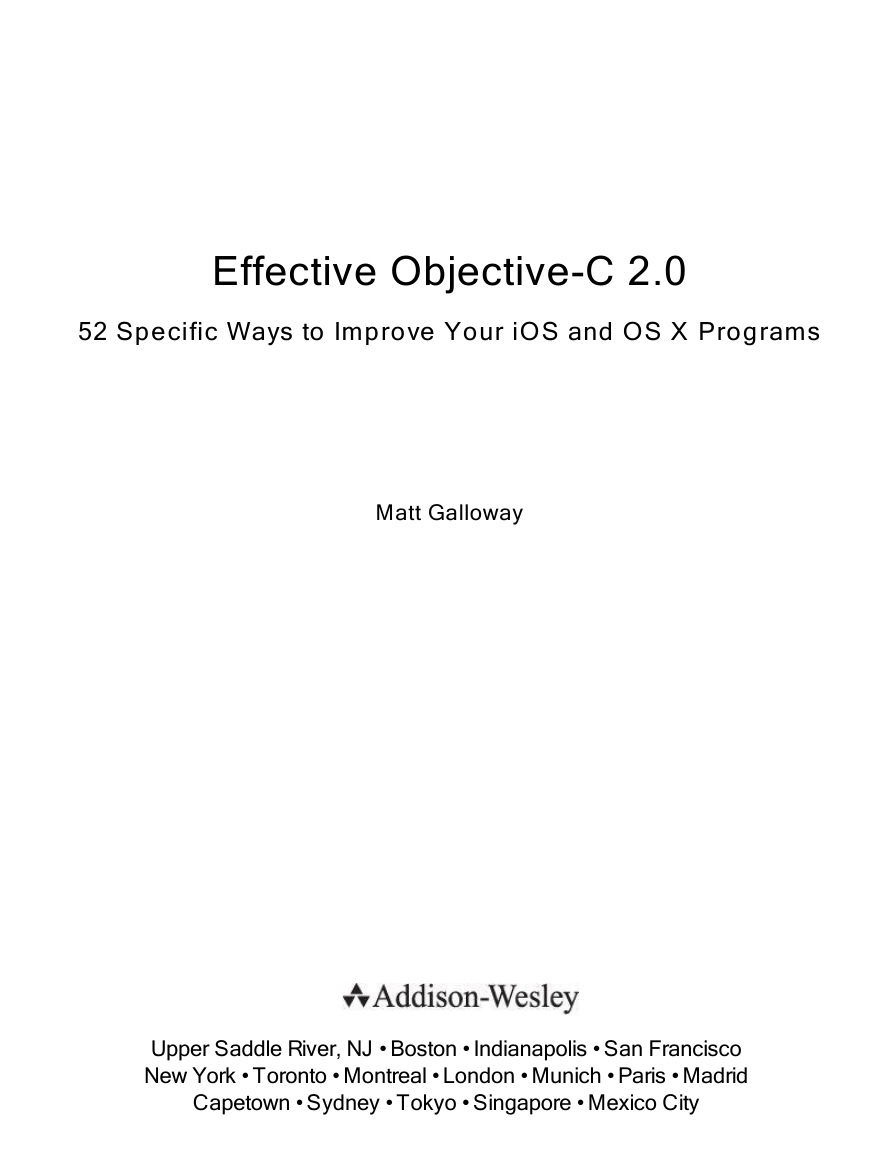


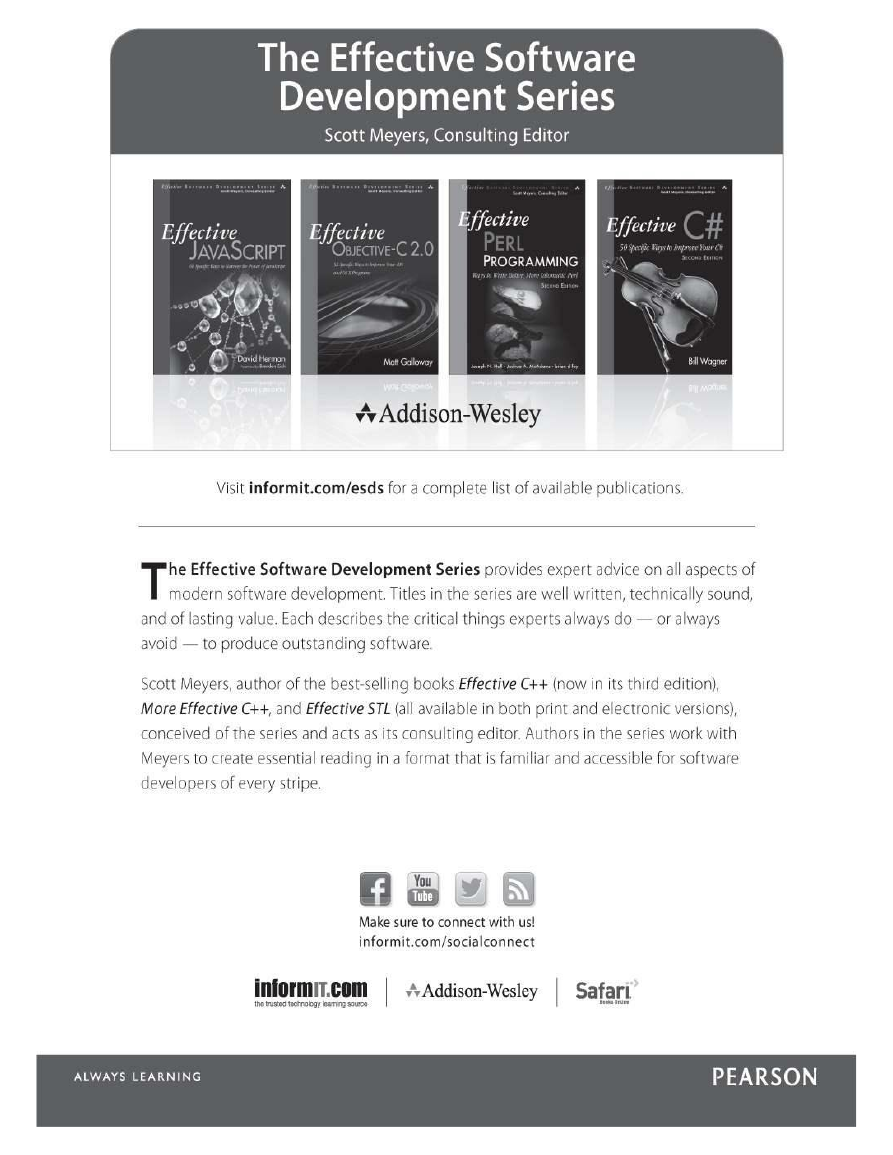

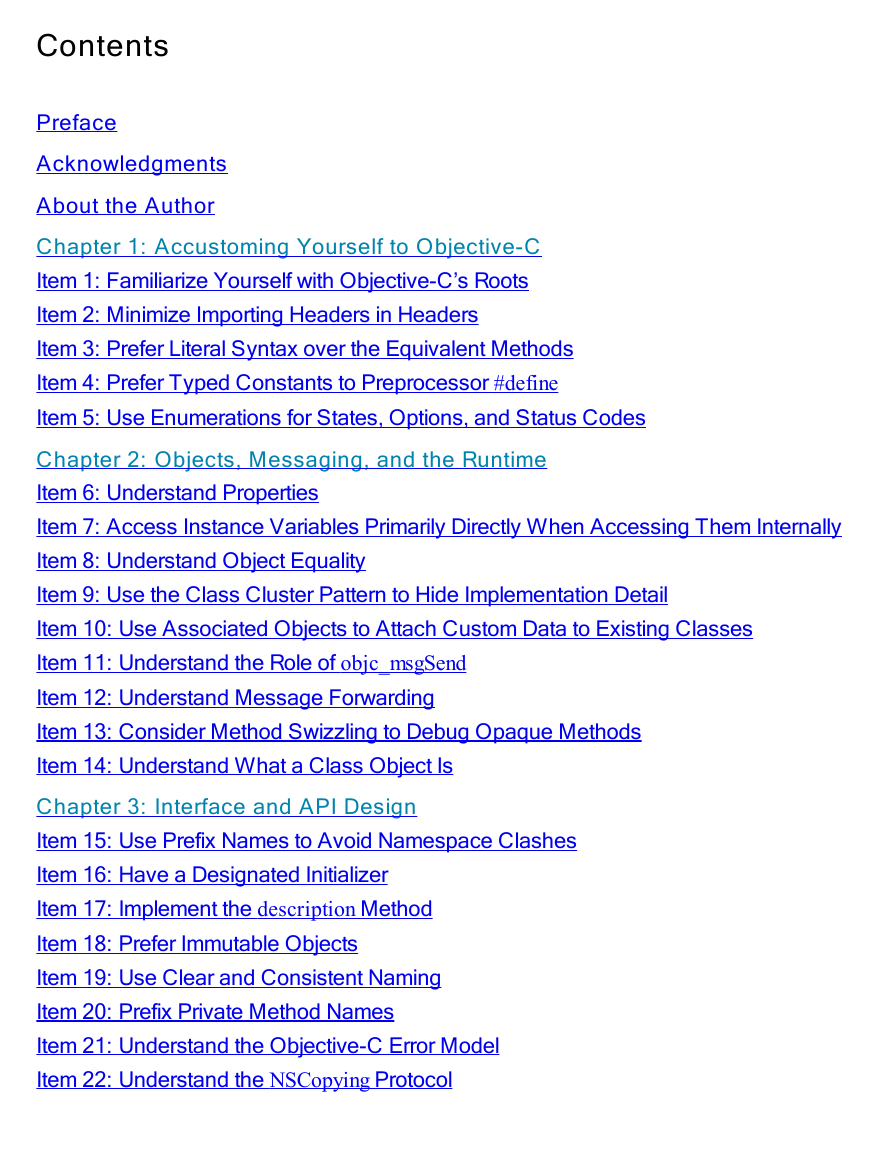








 2023年江西萍乡中考道德与法治真题及答案.doc
2023年江西萍乡中考道德与法治真题及答案.doc 2012年重庆南川中考生物真题及答案.doc
2012年重庆南川中考生物真题及答案.doc 2013年江西师范大学地理学综合及文艺理论基础考研真题.doc
2013年江西师范大学地理学综合及文艺理论基础考研真题.doc 2020年四川甘孜小升初语文真题及答案I卷.doc
2020年四川甘孜小升初语文真题及答案I卷.doc 2020年注册岩土工程师专业基础考试真题及答案.doc
2020年注册岩土工程师专业基础考试真题及答案.doc 2023-2024学年福建省厦门市九年级上学期数学月考试题及答案.doc
2023-2024学年福建省厦门市九年级上学期数学月考试题及答案.doc 2021-2022学年辽宁省沈阳市大东区九年级上学期语文期末试题及答案.doc
2021-2022学年辽宁省沈阳市大东区九年级上学期语文期末试题及答案.doc 2022-2023学年北京东城区初三第一学期物理期末试卷及答案.doc
2022-2023学年北京东城区初三第一学期物理期末试卷及答案.doc 2018上半年江西教师资格初中地理学科知识与教学能力真题及答案.doc
2018上半年江西教师资格初中地理学科知识与教学能力真题及答案.doc 2012年河北国家公务员申论考试真题及答案-省级.doc
2012年河北国家公务员申论考试真题及答案-省级.doc 2020-2021学年江苏省扬州市江都区邵樊片九年级上学期数学第一次质量检测试题及答案.doc
2020-2021学年江苏省扬州市江都区邵樊片九年级上学期数学第一次质量检测试题及答案.doc 2022下半年黑龙江教师资格证中学综合素质真题及答案.doc
2022下半年黑龙江教师资格证中学综合素质真题及答案.doc